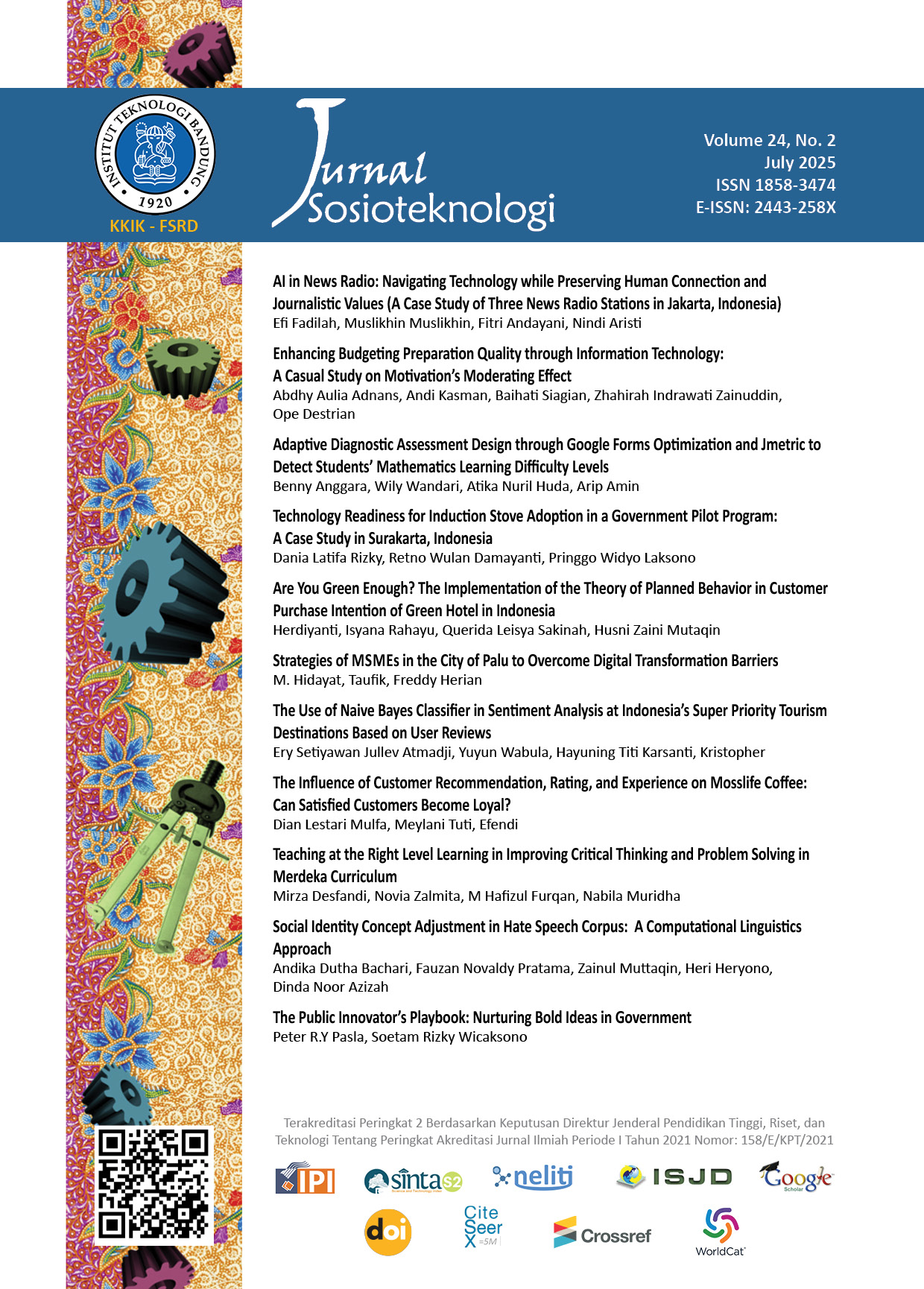The Public Innovator’s Playbook: Nurturing Bold Ideas in Government
Keywords:
Public Innovation, Strategic Management, Information Technology, Participatory Governance, Policy ImplementationAbstract
This article provides a comprehensive academic review of The Public Innovator’s Playbook: Nurturing Bold Ideas in Government by William D. Eggers and Shalabh Kumar Singh, highlighting its relevance across strategic management, information technology, and socio-political disciplines. Positioned as a critical guide for transforming public sector institutions, the book outlines a structured innovation cycle—comprising idea generation, selection, implementation, and diffusion—intended to embed innovation as a core organizational function rather than an ad hoc response to crises. In terms of strategic management, the book contributes by offering clear frameworks and replicable models that align innovation with institutional missions and managerial planning. From a technological standpoint, it underscores the vital role of digital tools such as blogs, wikis, and peer-to-peer networks in facilitating interdepartmental communication, breaking bureaucratic silos, and accelerating strategy execution. Socially and politically, it promotes participatory governance through citizen engagement, open collaboration, and multi-stakeholder input, supported by examples like the World Bank’s Development Marketplace. Despite these strengths, the book is not without its limitations. It tends to present innovation in an overly idealistic manner, often underplaying structural, political, and contextual barriers to implementation. Furthermore, its reliance on Western-centric case studies may limit applicability in diverse governmental contexts. Nonetheless, the book’s strengths lie in its pragmatic approach, its encouragement of a culture of experimentation, and its integration of cross-sectoral perspectives. It serves as both an operational toolkit and a visionary call for transforming public institutions into adaptive, learning systems. This review concludes that The Public Innovator’s Playbook is a valuable resource for public administrators, scholars, and policymakers who seek to foster sustained innovation within government, and recommends readers approach it with a contextual and critical lens to maximize its strategic and democratic potential.
References
Berry, F. (1994). Innovation in Public Management: The Adoption of Strategic Planning. Public Administration Review, 54, 322. https://doi.org/10.2307/977379
Bertot, J., Estevez, E., & Janowski, T. (2016). Universal and contextualized public services: Digital public service innovation framework. Gov. Inf. Q., 33, 211–222. https://doi.org/10.1016/j.giq.2016.05.004
Butt, A., Imran, F., Helo, P., & Kantola, J. (2024). Strategic design of culture for digital transformation. Long Range Planning. https://doi.org/10.1016/j.lrp.2024.102415
Eggers, W. D., & Singh, S. K. (2009). The Public Innovator ’ s Playbook: Nurturing bold ideas in government.
Fung, A. (2015). Putting the Public Back into Governance: The Challenges of Citizen Participation and Its Future. Public Administration Review, 75, 513–522. https://doi.org/10.1111/PUAR.12361
Lopes, A., & Farias, J. S. (2020). How can governance support collaborative innovation in the public sector? A systematic review of the literature. International Review of Administrative Sciences, 88, 114–130. https://doi.org/10.1177/0020852319893444
Mariani, I., & Bianchi, I. (2023). Conceptualising Digital Transformation in Cities: A Multi-Dimensional Framework for the Analysis of Public Sector Innovation. Sustainability (Switzerland), 15(11). https://doi.org/10.3390/su15118741
McGann, M., Blomkamp, E., & Lewis, J. (2018). The rise of public sector innovation labs: experiments in design thinking for policy. Policy Sciences, 51, 249–267. https://doi.org/10.1007/S11077-018-9315-7
Riduan, A. (2024). Citizen Participation in Policy Decision-Making. International Journal of Multidisciplinary Approach Sciences and Technologies. https://doi.org/10.62207/fz1xn342
Smith, R., Schäfer, S., & Bernstein, M. (2023). Governing beyond the project: Refocusing innovation governance in emerging science and technology funding. Social Studies of Science, 54, 377–404. https://doi.org/10.1177/03063127231205043
Suri, N., Benincasa, G., Tortonesi, M., Stefanelli, C., Kovach, J., Winkler, R., Kohler, R., Hanna, J., Pochet, L., & Watson, S. (2010). Peer-to-peer communications for tactical environments: Observations, requirements, and experiences. IEEE Communications Magazine, 48. https://doi.org/10.1109/MCOM.2010.5594678
Viana, L. B. F. (2025). Redefining Collaborative Governance in the Digital Age: insights from an integrative systematic review on the role of ICT in collaboration. Technium Social Sciences Journal. https://doi.org/10.47577/tssj.v67i1.12358
Vigar, G., Cowie, P., & Healey, P. (2020). Innovation in planning: creating and securing public value. European Planning Studies, 28, 521–540. https://doi.org/10.1080/09654313.2019.1639400
Wicaksono, S. R. (2024). Transformasi Digital: Strategi dan Aplikasi. Seribu Bintang. https://doi.org/10.5281/zenodo.13293361
Wicaksono, S. R., & Suprapto, E. (2025). Collaborative Project Based Learning using Office 365 during Covid-19 Outbreak. Faktor, 11(2024), 284–294. https://doi.org/http://dx.doi.org/10.30998/fjik.v11i3.18479
Published
Issue
Section
Copyright (c) 2025 Peter Remy Yosy Pasla, Soetam Rizky Wicaksono

This work is licensed under a Creative Commons Attribution-ShareAlike 4.0 International License.








